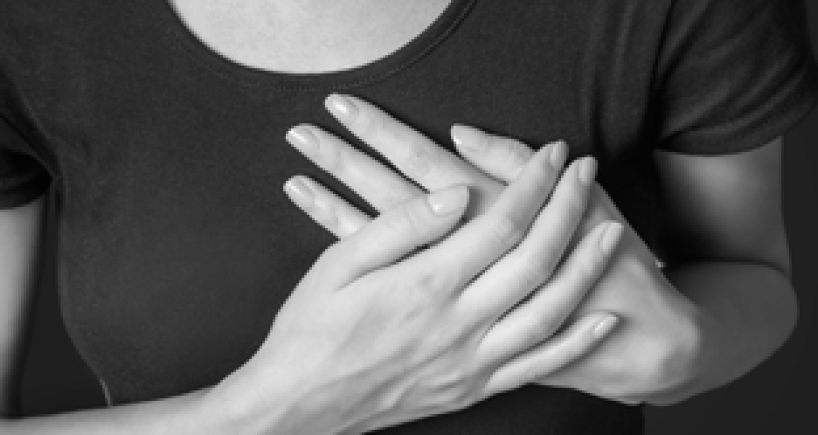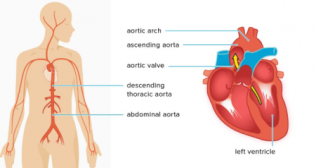
Cardiac Sciences
Heart Disease In Women
Dr. Aparna Jaswal Oct 21, 2014
 The fact is that heart disease is the most common killer of women, causing one in three deaths each year. But it doesn’t affect all women alike and the warning signs for women aren’t the same in men. What’s more: these facts only begin to scratch the surface. Although heart disease is often thought of as a problem for men, but women are almost three times more likely to die of it than breast cancer. There are several misconceptions about heart disease in women and these could be putting you at risk. Women under the age of 65 years, especially those with a family history of heart disease, need to pay attention to the risk factors of heart disease. Women of all ages should take heart disease seriously. The traditional risk factors for coronary artery disease — such as high cholesterol, high blood pressure and obesity — affect women and men.
Other factors may play a bigger role in the development of heart disease in women. Diabetes increases the risk of heart disease significantly more in women than in men. Mental stress and depression affect women's hearts more than men's. Depression makes it difficult to maintain a healthy lifestyle. The lack of physical activity is a major risk factor for heart disease as most women tend to be less active than men. Smoking is a greater risk factor for heart disease in women than in men. Pregnancy complications such as high blood pressure or diabetes during pregnancy can increase a woman's long-term risk of high blood pressure and diabetes and increase the risk of development of heart disease in both the mother and in her children.
Menopause is the time when a woman stops having menstrual cycles. If you have reached menopause, your overall risk of heart disease may increase due to the reduction in the hormones 'estrogen and progesterone' produced by your body because women tend to develop high cholesterol. They develop tendency towards higher blood pressure. While some women have no symptoms, others experience angina (dull, heavy to sharp chest pain or discomfort), pain in the neck/jaw/throat or pain in the upper abdomen or back. This may occur during resting period, begin while doing physical activity, or be triggered by mental stress. Women are more likely to describe chest pain that is sharp, burning and more frequently have pain in the neck, jaw, throat, abdomen or back. Sometimes, heart disease may be silent and not diagnosed until a woman experiences signs or symptoms of a heart attack, heart failure, an arrhythmia, or stroke.
It is important for every woman to know about their risk factors and recognise the warning signs for heart disease and stroke so that you can prevent and manage them. Women can prevent and reduce their risk of heart disease by becoming and remaining smoke free, achieving and maintaining a healthy body weight, being physically active for at least 150 minutes of moderate to vigorous intensity aerobic physical activity per week,in bouts of 10 minutes or more. It’s also very important to maintain blood pressure through lifestyle changes. It’s advised to use medication to reduce the risk of heart disease and stroke as prescribed by your healthcare provider.
The fact is that heart disease is the most common killer of women, causing one in three deaths each year. But it doesn’t affect all women alike and the warning signs for women aren’t the same in men. What’s more: these facts only begin to scratch the surface. Although heart disease is often thought of as a problem for men, but women are almost three times more likely to die of it than breast cancer. There are several misconceptions about heart disease in women and these could be putting you at risk. Women under the age of 65 years, especially those with a family history of heart disease, need to pay attention to the risk factors of heart disease. Women of all ages should take heart disease seriously. The traditional risk factors for coronary artery disease — such as high cholesterol, high blood pressure and obesity — affect women and men.
Other factors may play a bigger role in the development of heart disease in women. Diabetes increases the risk of heart disease significantly more in women than in men. Mental stress and depression affect women's hearts more than men's. Depression makes it difficult to maintain a healthy lifestyle. The lack of physical activity is a major risk factor for heart disease as most women tend to be less active than men. Smoking is a greater risk factor for heart disease in women than in men. Pregnancy complications such as high blood pressure or diabetes during pregnancy can increase a woman's long-term risk of high blood pressure and diabetes and increase the risk of development of heart disease in both the mother and in her children.
Menopause is the time when a woman stops having menstrual cycles. If you have reached menopause, your overall risk of heart disease may increase due to the reduction in the hormones 'estrogen and progesterone' produced by your body because women tend to develop high cholesterol. They develop tendency towards higher blood pressure. While some women have no symptoms, others experience angina (dull, heavy to sharp chest pain or discomfort), pain in the neck/jaw/throat or pain in the upper abdomen or back. This may occur during resting period, begin while doing physical activity, or be triggered by mental stress. Women are more likely to describe chest pain that is sharp, burning and more frequently have pain in the neck, jaw, throat, abdomen or back. Sometimes, heart disease may be silent and not diagnosed until a woman experiences signs or symptoms of a heart attack, heart failure, an arrhythmia, or stroke.
It is important for every woman to know about their risk factors and recognise the warning signs for heart disease and stroke so that you can prevent and manage them. Women can prevent and reduce their risk of heart disease by becoming and remaining smoke free, achieving and maintaining a healthy body weight, being physically active for at least 150 minutes of moderate to vigorous intensity aerobic physical activity per week,in bouts of 10 minutes or more. It’s also very important to maintain blood pressure through lifestyle changes. It’s advised to use medication to reduce the risk of heart disease and stroke as prescribed by your healthcare provider. Categories
Clear allMeet the doctor

Dr. Aparna Jaswal
DIRECTOR CARDIOLOGY | Fortis Okhla
- Cardiac Sciences | Electrophysiology
-
19 Years
-
2000



















